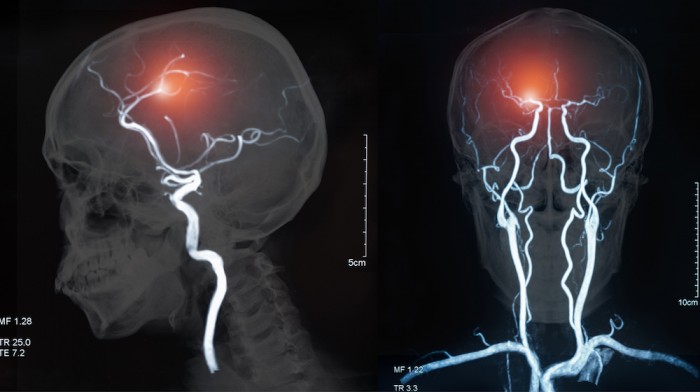
Stroke is the sixth leading cause of death in the state of Minnesota and is also a leading cause of disability, according to the Minnesota Department of Health. Alarmingly, roughly 75% of Americans under the age of 45 don’t know the signs of one.
“The signs and symptoms of stroke are not black and white, so you also have to have the courage to act when you think you might be having one, ” said Andrew Grande, MD, a neurosurgeon at University of Minnesota Physicians (M Physicians).
Studies have shown that while one in three Americans have had signs of a “mini stroke,” only 3% took any action.
“I had a family friend who I suspected was having a stroke, and he convinced me not to call paramedics,” Dr. Grande recalled. “He did not have a stroke, but this led to the epiphany that many people experiencing symptoms are afraid to seek help.”
One way to remember the signs and symptoms of a stroke is the acronym B.E.F.A.S.T:
B - Balance loss
E - Eyesight change
F - Facial drooping
A - Arm weakness
S - Slurred speech
T - Time to call 911
If you or someone you know is experiencing these symptoms, time is of the essence. Getting to the hospital quickly has been shown to improve outcomes after a stroke, with some studies suggesting even 15 minutes can make a lasting impact.
“If you can get to us within six hours, 90% of the time we can open up the occluded blood vessel and you can walk out of the hospital,” Dr. Grande explained. “The extra time spent debating whether or not to go to the hospital is critical. That can be the difference between us successfully treating you or not.”
Apart from educating Minnesotans about stroke warning signs, the University of Minnesota and M Physicians have been at the forefront of advancing clinical and basic science research to improve outcomes. The interdisciplinary stroke program partners experts from neurology, neurosurgery and radiology to deliver world-class stroke care at M Health Fairview’s University of Minnesota Medical Center (UMMC) and Southdale Hospital, both designated comprehensive stroke centers.
“The University of Minnesota, in partnership with M Physicians and Fairview Health Services, has done a very good job growing our stroke program,” Dr. Grande said.
Over the last decade, the Telestroke program has grown and now allows physicians at these comprehensive centers to remotely monitor patients who experience less severe strokes, so they don’t have to be transferred from another hospital. Providers and patients in northern Minnesota can video call M Physicians specialists in the Twin Cities for a visual exam to determine whether to administer tPA (an intravenous medicine used to dissolve a stroke-causing blood clot) or initiate a stroke intervention and fly the patient to UMMC.
UMMC is also a StrokeNet site, a National Institutes of Health (NIH) program leading and enrolling patients in many clinical trials. The overarching goal is to promote and develop stroke research in Minnesota to improve prevention, treatment and recovery.
“I think that by being part of StrokeNet and participating in clinical trials, we are offering these new, cutting-edge therapies to patients,” Dr. Grande said.
Dr. Grande also directs the Earl Grande, Vel, V. Richard Zarling Stroke, Stem Cell and Neuroimaging Laboratory, focused on translating stem cell therapies for stroke from the bench to the bedside. Ongoing studies include exogenous cord blood stem cell transplantation for neuroprotection, reprogramming reactive astrocytes to form neurons and characterizing normal adult neural stem cells found in the brains of humans and other large animals. The M Health stroke team which Dr. Grande is a part of now manages stroke care throughout the entire M Health Fairview system, meaning innovations uncovered through research initiatives are seamlessly integrated into clinical practice.
“It’s a really unique program,” Dr. Grande said. “I think we have a purpose to influence stroke care in the state of Minnesota.”